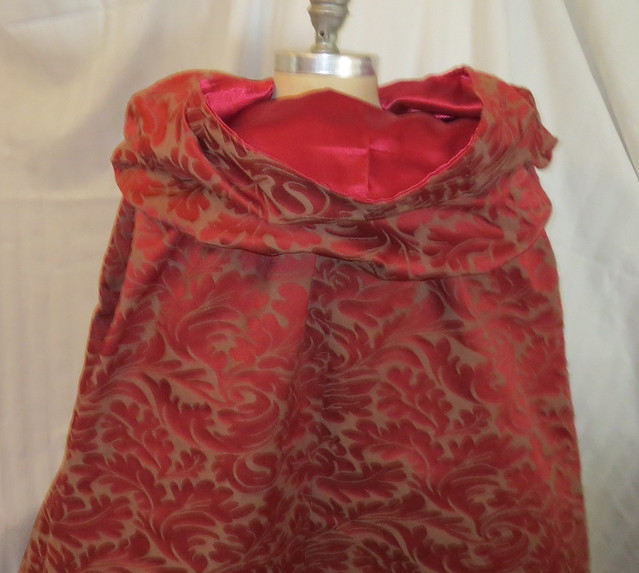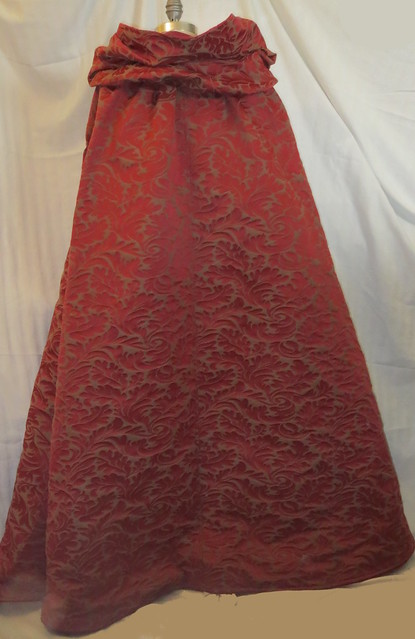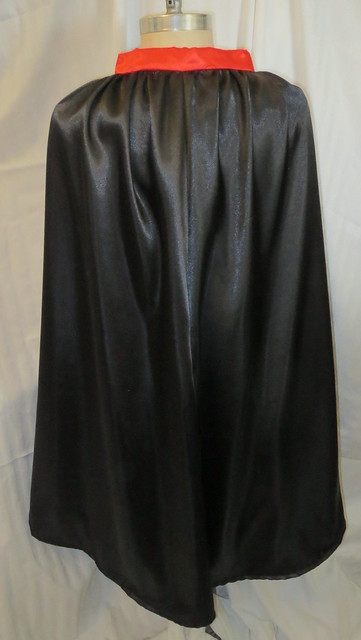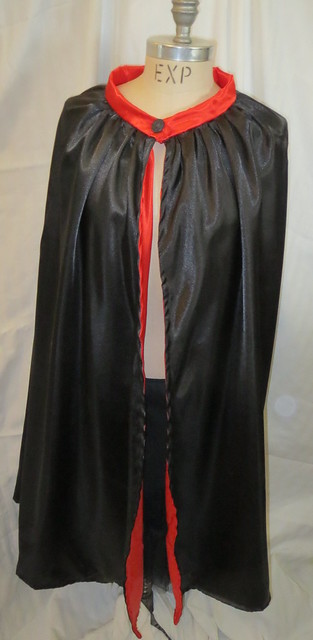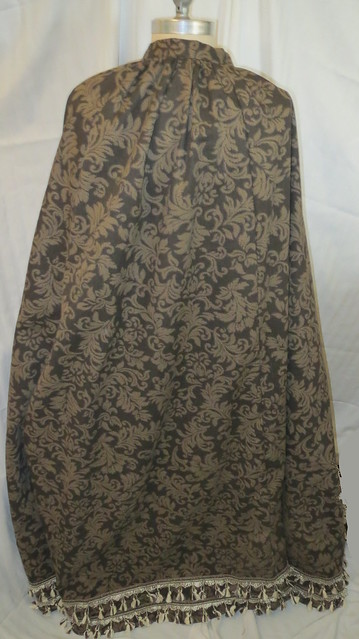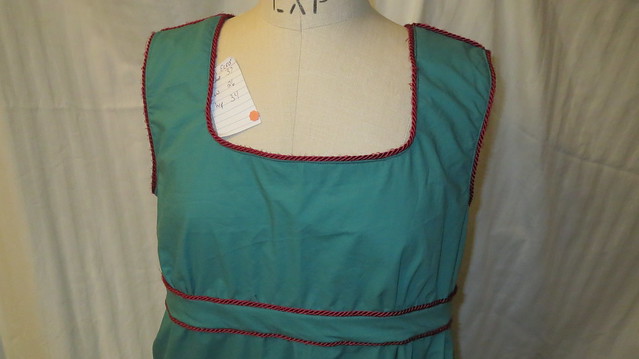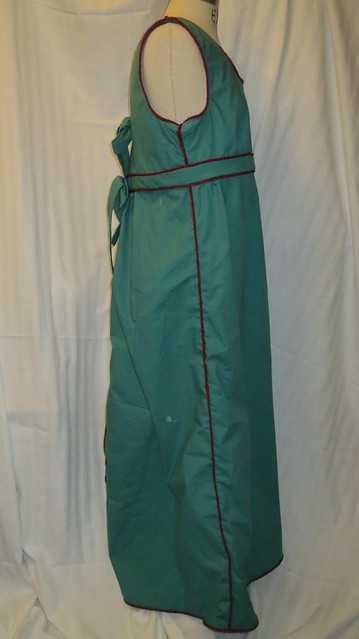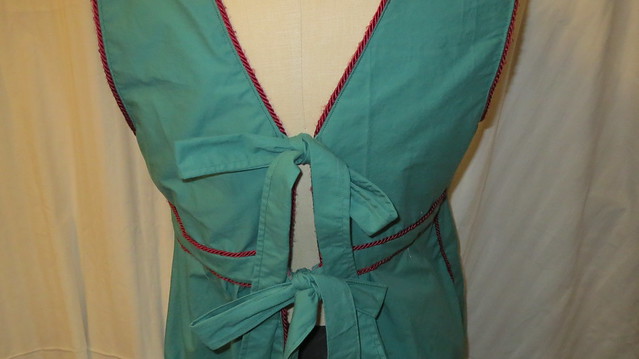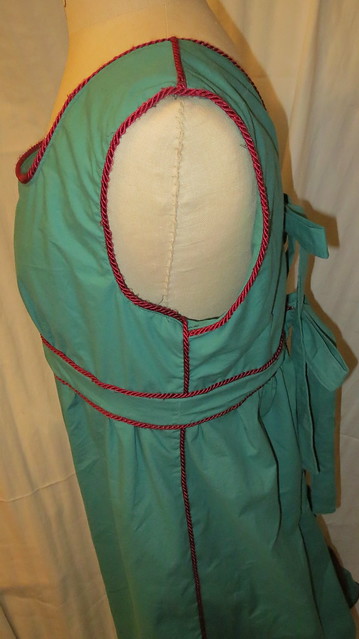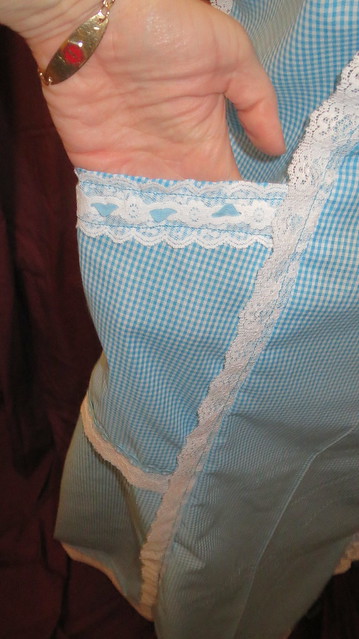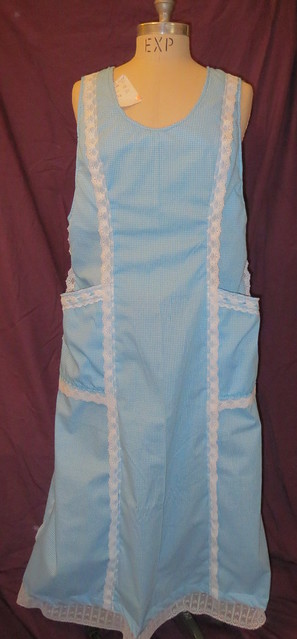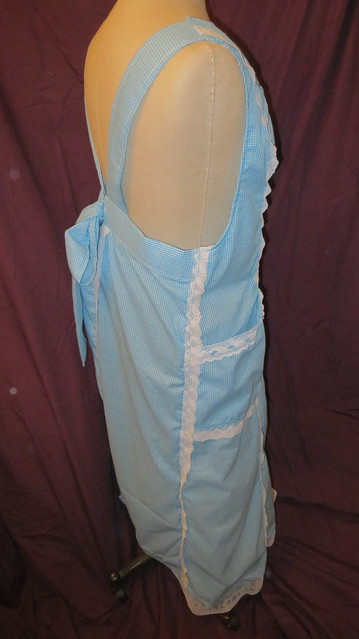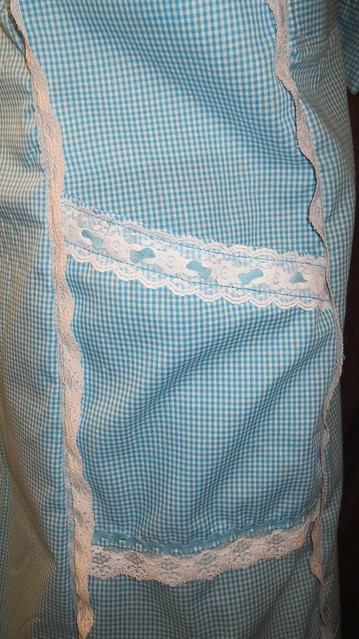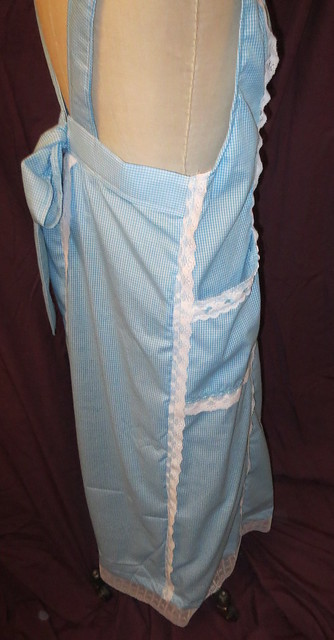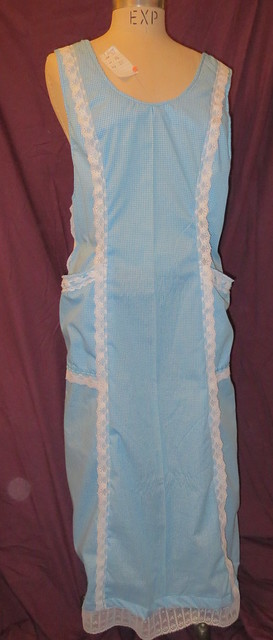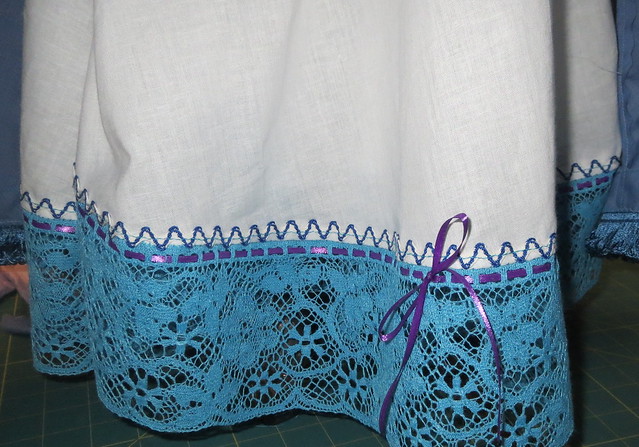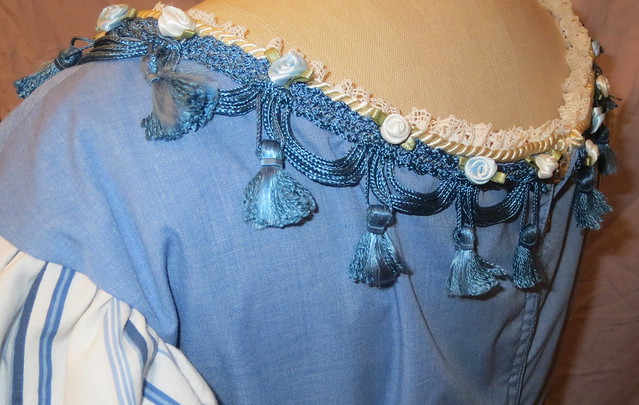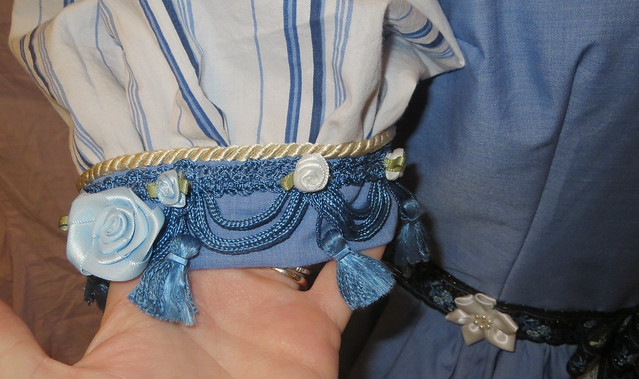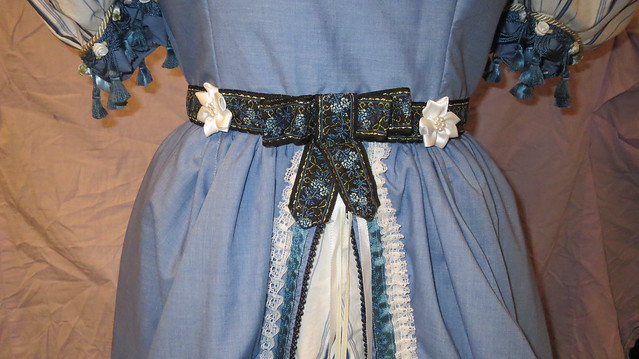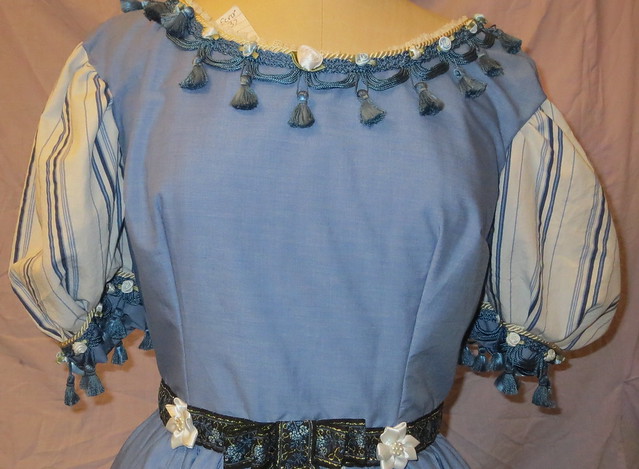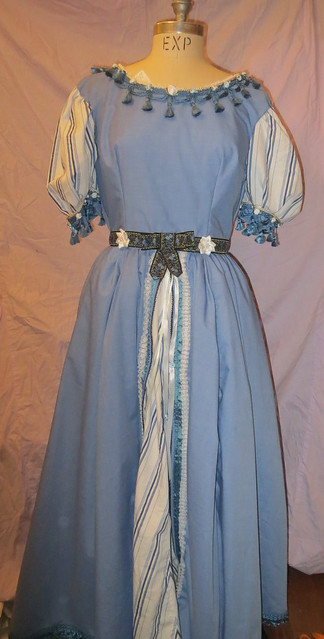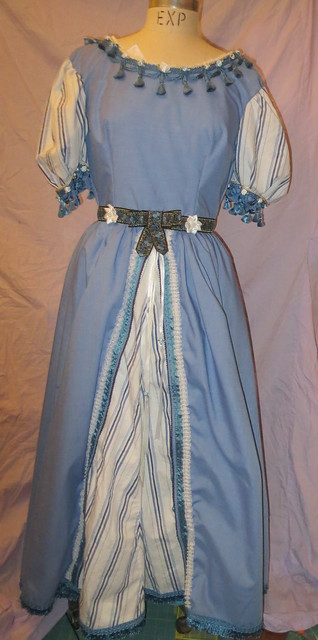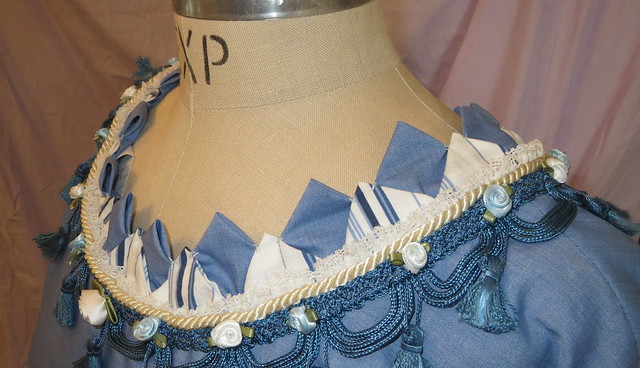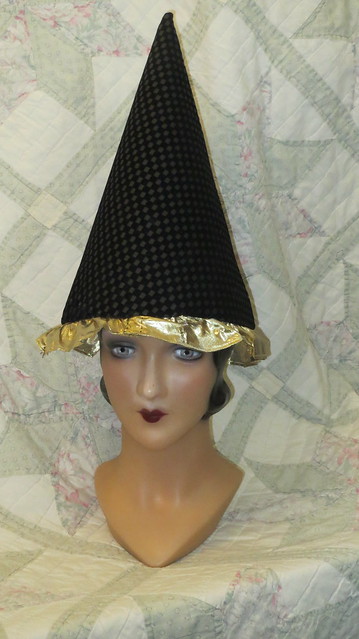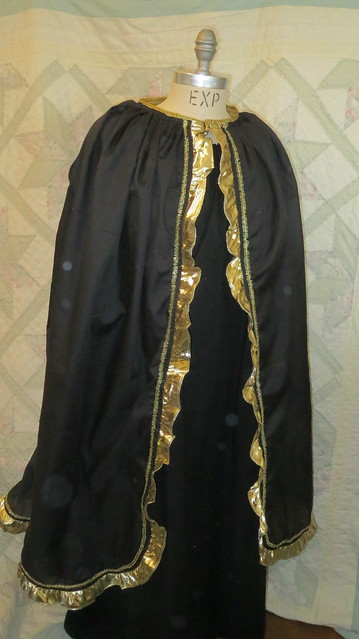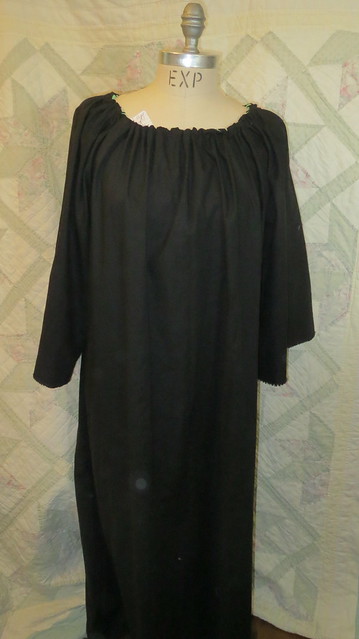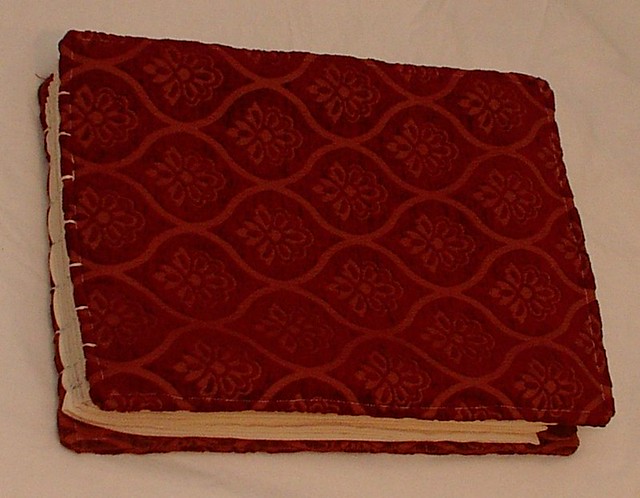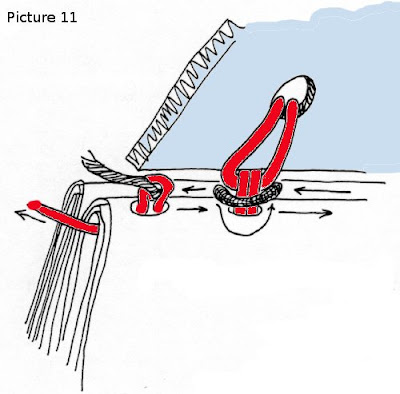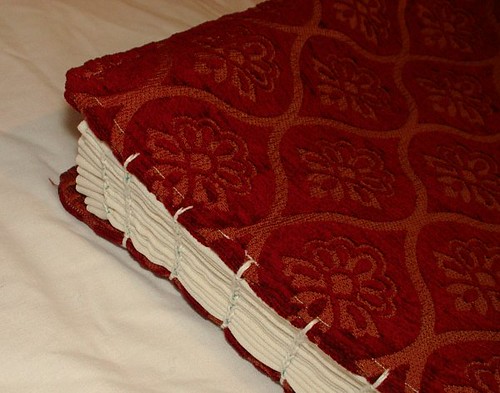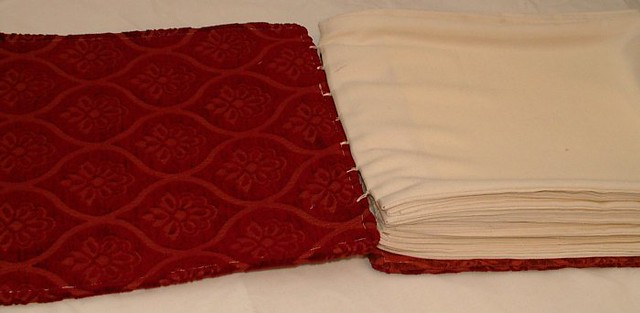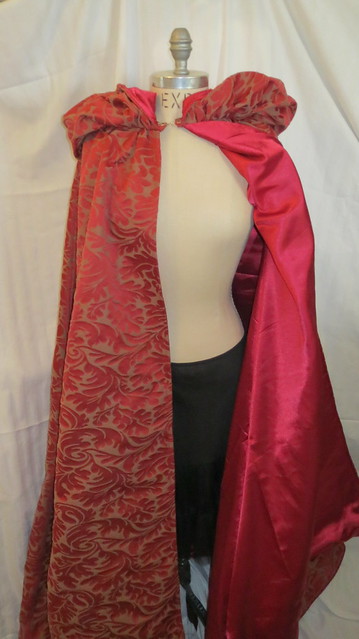
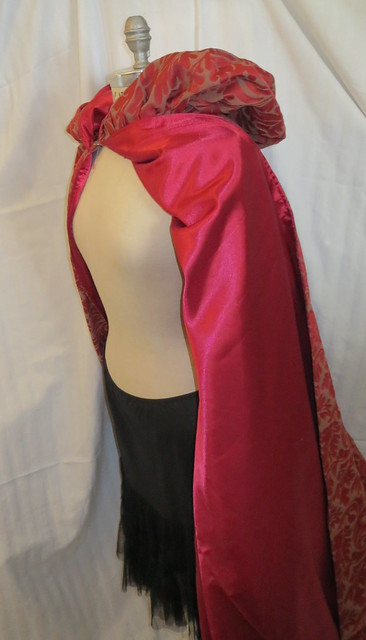 Because my brain is tired from sewing so much I decided I would go to an easy sewing project capes. There are about 5 capes in the play Aunt March has 2, Marmei 1, and Jo 2 can't think of others at the moment. So I think that is all of them I have to make. Which is not to say I have made all of them yet. I have made 3 have the fourth one cut out and still figuring out the 5th one what I want to do for it.... Oh yeah! just remembered 1 more, funny I already made it and I forgot that Meg has one too when she is a witch.
Because my brain is tired from sewing so much I decided I would go to an easy sewing project capes. There are about 5 capes in the play Aunt March has 2, Marmei 1, and Jo 2 can't think of others at the moment. So I think that is all of them I have to make. Which is not to say I have made all of them yet. I have made 3 have the fourth one cut out and still figuring out the 5th one what I want to do for it.... Oh yeah! just remembered 1 more, funny I already made it and I forgot that Meg has one too when she is a witch.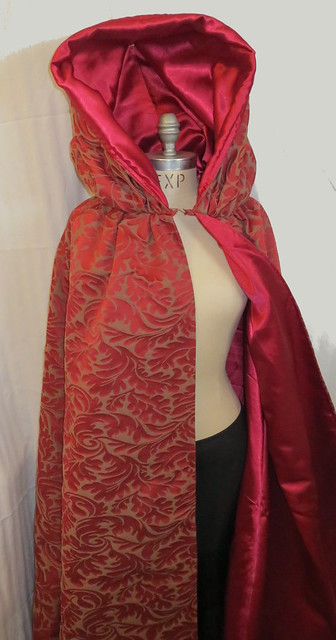
This first one above is Jo's to wear during a winter scene. The only embellishments I used was cording at the hem for strength in wear and pretty metal hook and eye closures. I figured the fabric itself was enough, especially with a shinny satin lining. Both of these fabrics and the cording are the same ones I used on my daughters Shakespearean Halloween outfit this last October. Yes these are scrapes and yes I still have more of both to make other items in the future. This cape is reversible if I want it to be just not sure who would want shinny satin on the outside of a cape like this. She also has a hood on her cape the only one in the play to have a hood. Jo sort of has a theme color of red in the beginning of the play to show she is strong and powerful and more dominate in personality than most females of the era as the play goes on her colors become more subdued as she learns life has trials and love. But her clothes still lean towards the masculine side of fashion because she is still a woman doing a mans career in a day and age when women did not.
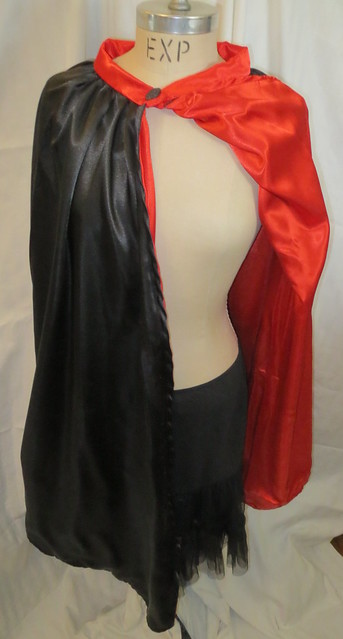 This second one is also Jo's in the play when she is acting as Rodrigo in the play within the play. The character is supposed to be over the top with a shinny cape that is lined bright screaming red. I have images of Dracula and phantom of the opera and other old sci-fis going through my head with this one.So this was born the button closure is antique Jet and is period to the play. The red satin came from a set of new sheets still in the package I found thrift shopping around valentine's day. Which I bough specifically for this purpose $2.00 how could it go wrong. The black satin is new for the play but bought with a coupon to make it 40 % off.
This second one is also Jo's in the play when she is acting as Rodrigo in the play within the play. The character is supposed to be over the top with a shinny cape that is lined bright screaming red. I have images of Dracula and phantom of the opera and other old sci-fis going through my head with this one.So this was born the button closure is antique Jet and is period to the play. The red satin came from a set of new sheets still in the package I found thrift shopping around valentine's day. Which I bough specifically for this purpose $2.00 how could it go wrong. The black satin is new for the play but bought with a coupon to make it 40 % off.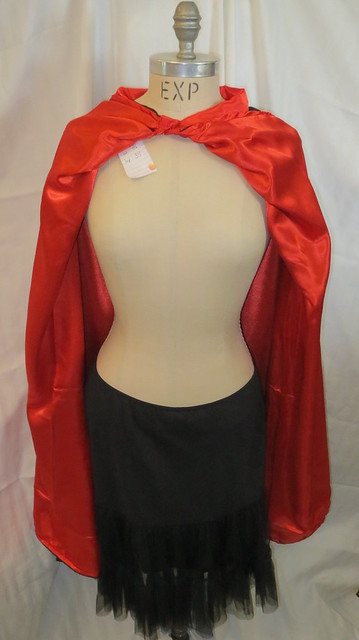
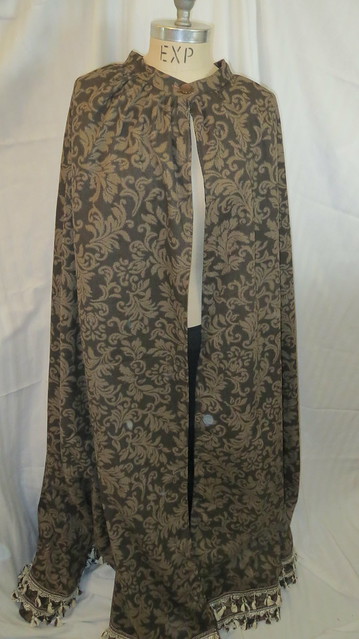
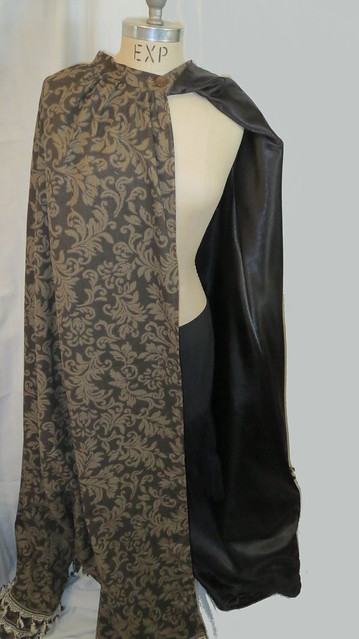 The last cape for the day is Marmei's for when she come in at the beginning of the play from the cold winter outside. This is during the war so dark colors and a somber look. Only trim is fringe around the hem a simple brown button and no hood and simple black lining same used in the other cape above as the outside fabric. All three capes are reversible.
The last cape for the day is Marmei's for when she come in at the beginning of the play from the cold winter outside. This is during the war so dark colors and a somber look. Only trim is fringe around the hem a simple brown button and no hood and simple black lining same used in the other cape above as the outside fabric. All three capes are reversible.On a note from my husband.

